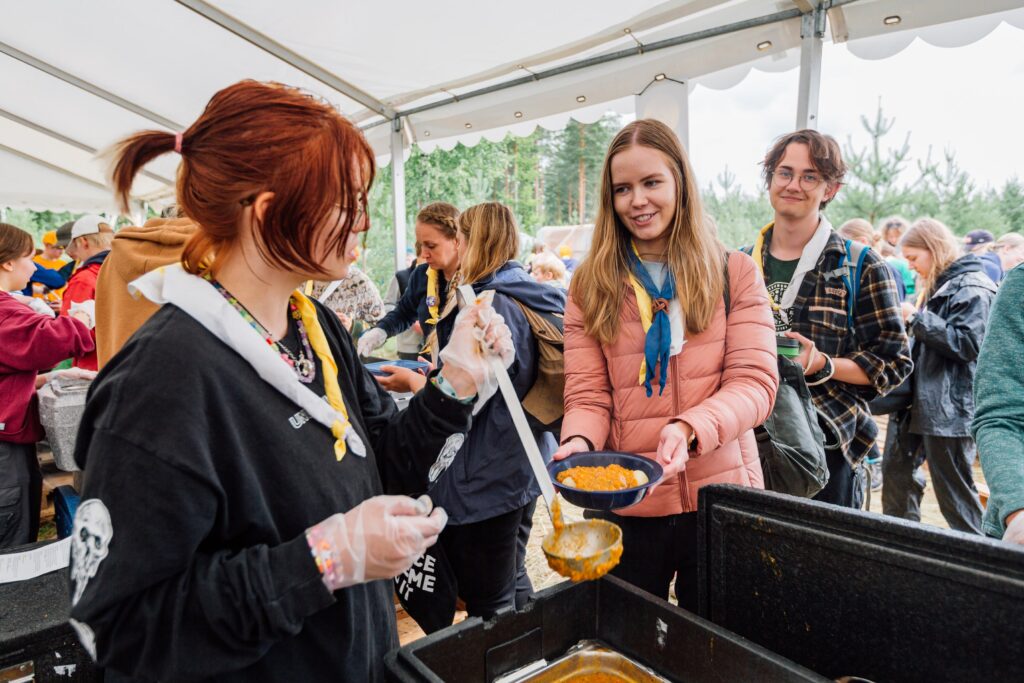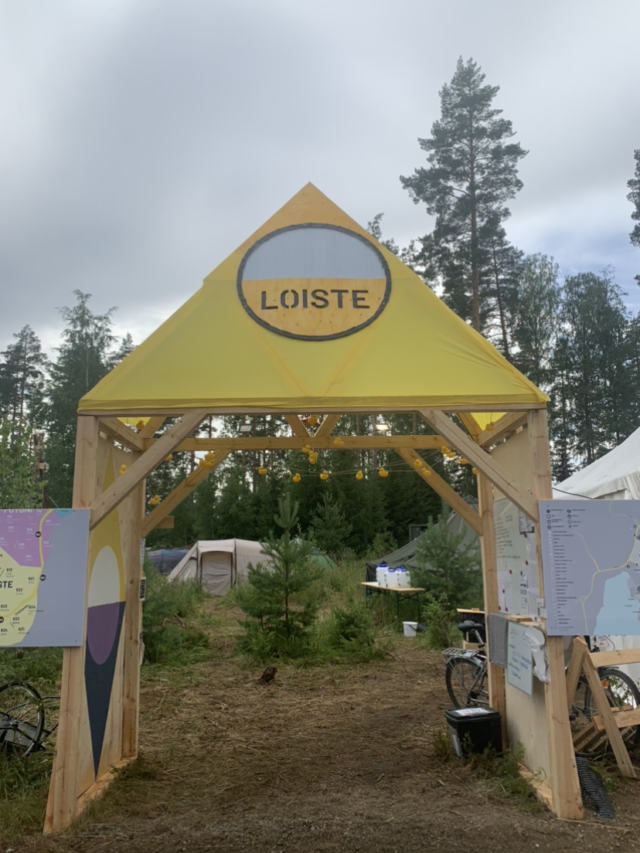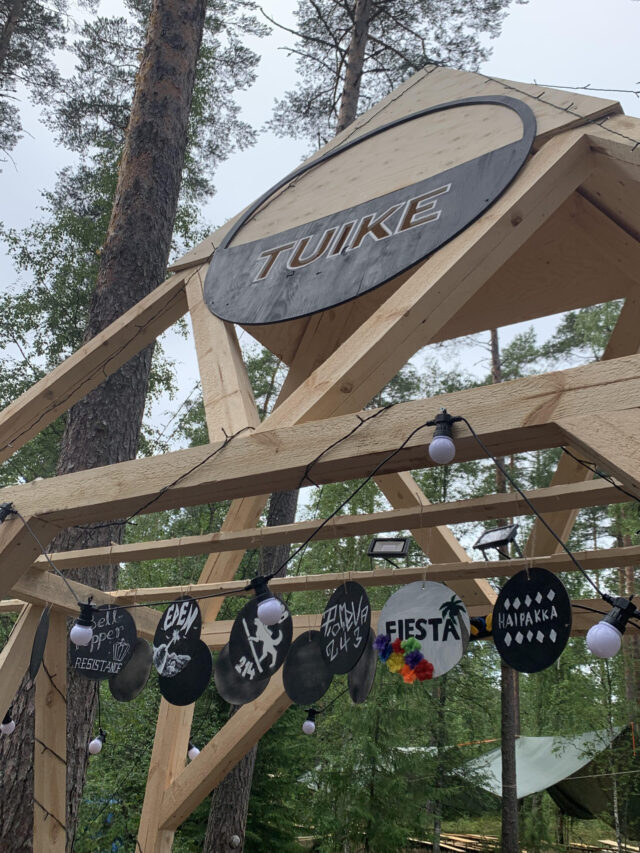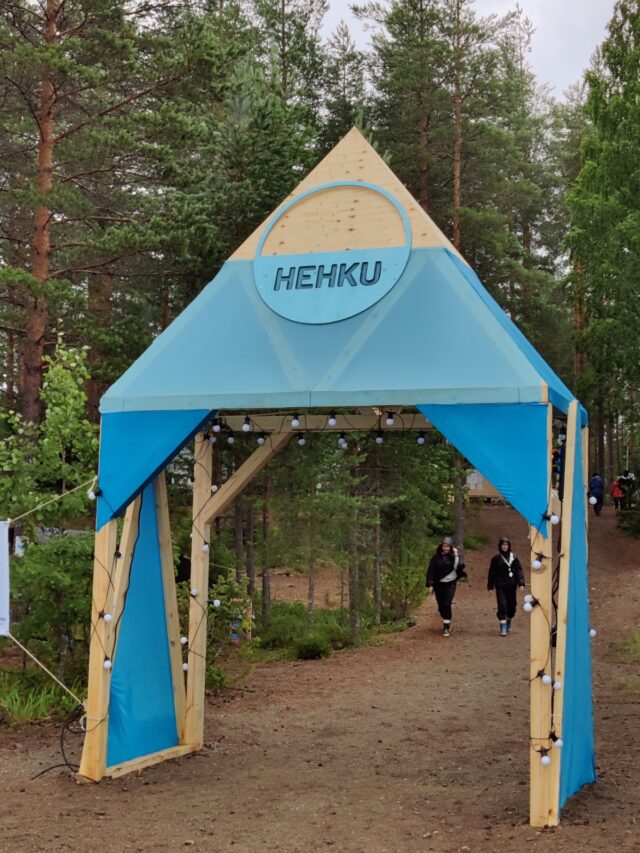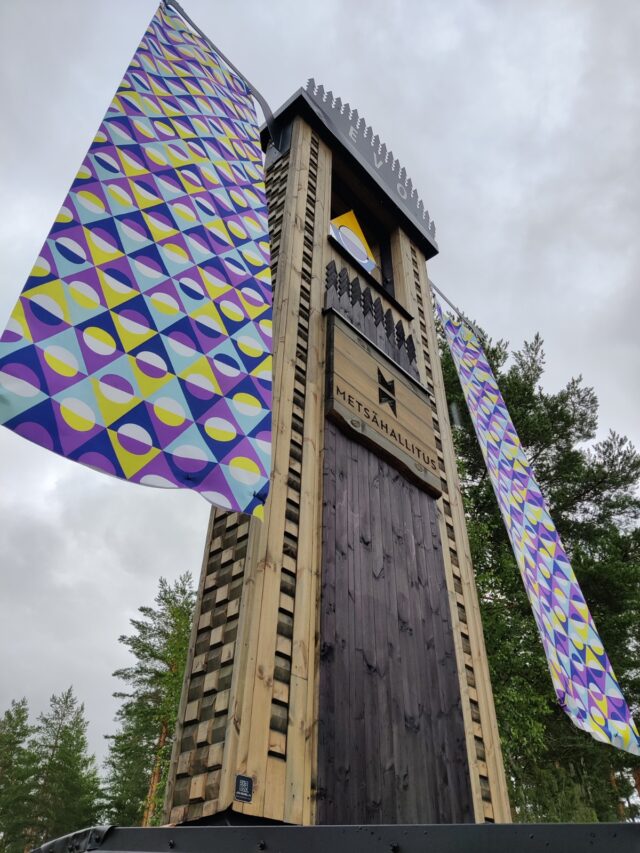Scouting is a climate-responsible hobby in many ways. Scouts acquire equipment for long-term use, lend a friend equipment they lack and travel to events by public transport. At the camps, you stay in tents and eat from your own dishes, which are washed without wasting hot water.
An event like Kajo creates climate effects. In Kajo’s case, climate impacts mean the emissions generated by the production, transportation or use of all activities and materials visible around us. For example, every item used at the camp is made using energy and raw materials. The supplies have been transported to Kajo using fuel. Electricity and fuel are also consumed at the camp. Kajo’s carbon footprint is obtained when all these are added together.
How big is the carbon footprint of Kajo, or a person from Kajo? We can determine Kajo’s total emissions only after the event is over, when we know the purchases made for the event, the energy consumed and the car kilometers driven. However, we can already present estimates of, for example, how much Kajo people’s food creates climate effects.
Example: Monday 18.7. climate emissions
On Monday, the campers’ morning started with a breakfast of yogurt, bread and cheese. We ate vegetable bolognese for lunch and vegetable or ham frestelse for dinner, with pancakes as a late snack. The combined climate effect of these meals is about 3.8 to 4.6 kilograms of carbon dioxide, depending on whether you eat a vegetable or ham course for dinner. The combined climate impact of Monday’s meals is roughly as great as the trip by car from Hämeenlinna to Evo.
In the evening, heating the water of the campers taking a sauna generates 20 grams of carbon dioxide emissions. Heating the sauna generates 1.2 kilograms of carbon dioxide emissions per camper. The recycling of waste generated during the day is a total of only half a kilo of carbon dioxide. However, recycling is important, as unsorted mixed waste generates many times more emissions than recycling.
It can be difficult to grasp the magnitude of the numbers. However, finding out and calculating them is necessary so that emissions can be further reduced in future camps. This is the main goal of the team’s climate work. As individual campers, we can all influence Kajo’s carbon footprint by favoring vegetarian food at (also) future camps, reducing the use of hot water and recycling correctly. We can also favor shared transportation and public transport.
At Kajo, climate experts Janita Rintala and Salla Ahonen, who also work in the field outside the team, investigate climate impacts. The climate experts’ work will continue even after the camp well into the fall – only then will we find out what the climate effects of Kajo were.
Text: Kajo’s responsibility team
Translation:Ger Hennessy
Photos: Filip Eller
